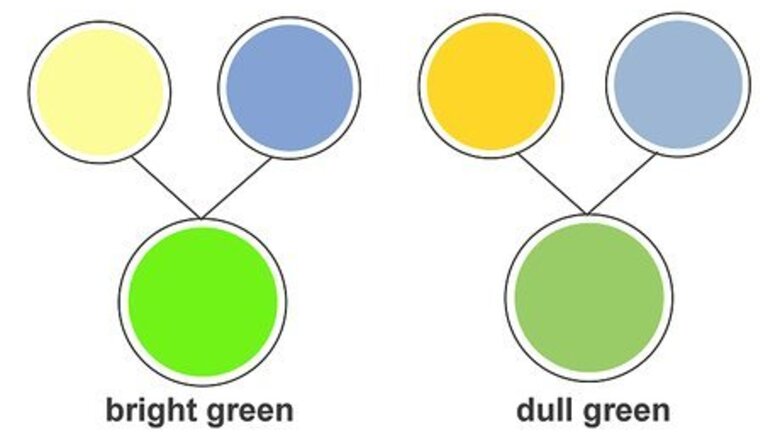
views
Using the Right Supplies
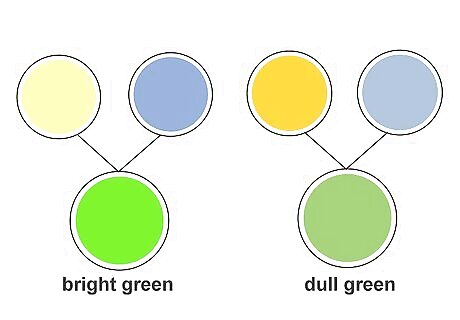
Use brighter colors. If you're visually impaired, brighter colors may be easier to see. When assembling your supplies, go for the brightest colors possible. Pick colors that stand out to you so you can make out the shapes you're drawing. The best colors vary from person-to-person. Pick colors that you personally can see easiest. It may take some experimenting to find the right color palate for you.
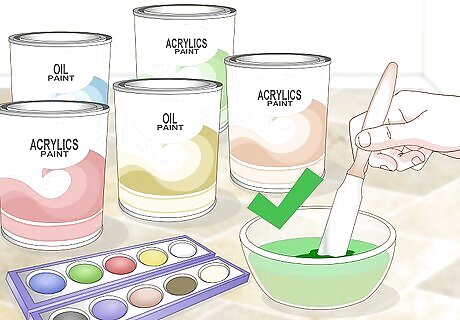
Go for high contrast trays. High contrast trays can help you identify colors when painting. Choose trays that have different colored compartments and dab only a small amount of paint in each compartment. This will add further color differentiation, allowing you to select the right colors if you're struggling to see the paint. You can also go for things like high contrast brushes to help you identify the right brush to use. If you are blind, you can use contrasting tools or textures to help identify paints in the tray. Use a brush with a different type of handle for each color, for example.
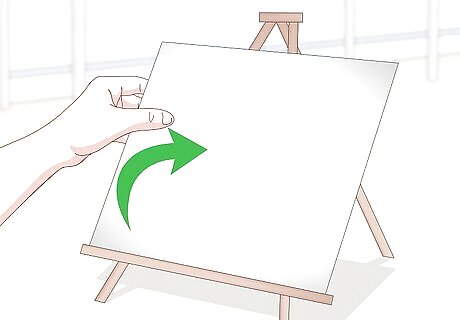
Try a larger canvas. If you're visually impaired, a bigger canvas may help. Painting and drawing larger objects will make them easier to see. If you have space, opt for a very large canvas to help guide you while painting. If you're painting for a class, let the teacher ahead of time about your vision issues. Request that they provide you with a larger canvas if you find this helps you see.

Use scents and textures to your advantage. Turning in to your other senses can help guide you if you have visual difficulties. Choose materials of different textures and pay attention to any variations in scent between types and colors of paint. This can help guide you as you paint. For example, if you're working with many different brushes, get brushes made from different materials. The different feel of each handle will help you paint. Get a physical feel for your canvas before you begin painting. Run your hands over it and notice if any corners or sections have slightly different textures. This will help you understand if you're painting the right portion of the canvas.
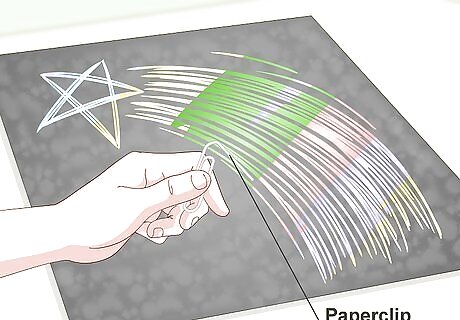
Try raised line drawings. If you are blind, raised line drawings can help you paint. These drawings are made by using thin wires to create shapes and facial profiles. You glue wires down on a canvas to start your outline. You can then paint the colors you want within these outlines.
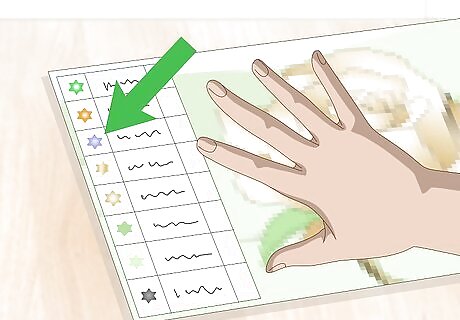
Paint on tactile surfaces. Tactile surfaces can help if you're blind as their textures will change based on which areas have and have not been painted. Try using rougher canvases, made from materials like mesh screening or sandpaper. As you paint over these surfaces, you will notice the feel of the brush and the feedback it sends to you changes as you cover the surface in paint. This can help guide you when painting your canvas.
Painting Effectively
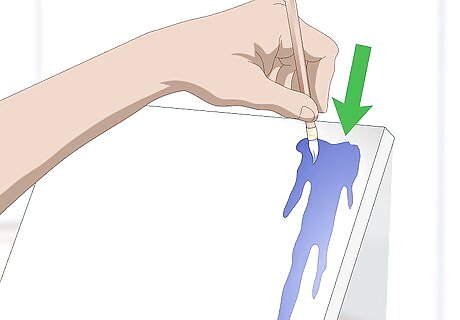
Outline your painting first. Outline the image you want to draw with sharp colors. A black outline on a white canvas creates a high contrast outline. This can help you see where to apply each color as you paint. If you're struggling to create an outline on your own, see if you can find a friend or family member to assist you.
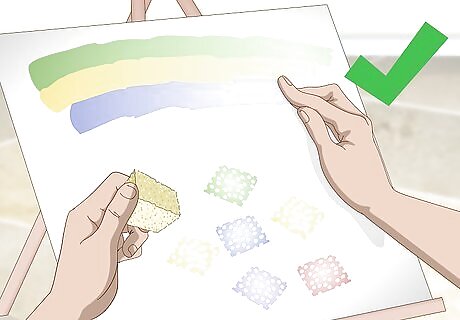
Use your fingers to feel the canvas. As you begin painting, rely on your fingers. You can use your fingers to measure the rough distance between different portions of your canvas. You can also use your fingers to identify where you have and have not painted. When you're visually impaired, you must rely heavily on touch to guide you in your painting. Be careful to go slowly when feeling your canvas. If you feel paint near the tips of your fingers, stop and try to trace your fingers around the outline of the paint to determine its boundaries. You do not want to end up smudging or smearing your paint. It can help to pause between each color you apply to let it dry slightly. This can help you cut back on smearing or smudging your paint.
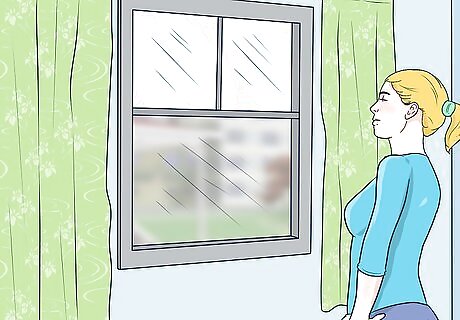
Make use of light. If you're visually impaired, bright lights can help you see better. Turn on as many lights as possible when painting. If possible, paint during the day in a room with a lot of windows to make use of natural light. It can sometimes help to shine bright lights just over your canvas to help you see better. If you're painting in a class, let the teacher know you need extra light to paint. They may be able to provide you with a lamp or other device to help guide your painting.
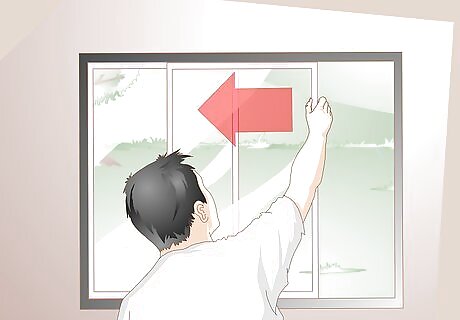
Paint in short spurts. Some visually impaired or blind people find painting in short spurts helps. This will cut back on eye strain. Try painting in one to two hour intervals, gradually completing your work over time.
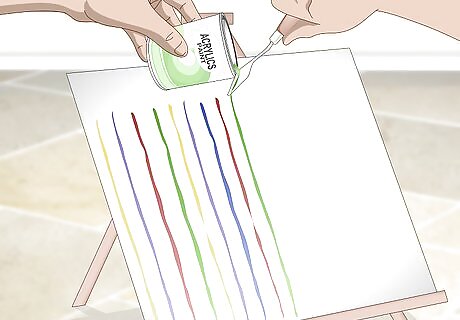
Add symbols based on texture. If you're blind, it may be hard for you to portray certain objects exactly. However, many blind painters rely on metaphor in their drawings based on the physical feeling of various objects. For example, circular objects may be soft while more square-like objects are hard. You can use hard versus soft shapes to create the feeling you're trying to convey in your painting. This can help if you struggle to display concrete objects in your art.

Feel objects that you paint. If you're blind and want to create a physical object, use your hands to feel the object. Figure out where the object stands in space and try to mark these spaces on your canvas. You can recreate an object on your canvas relying on your hands as your guide. It can help to start by marking small dots outlining the general shape of the object. From there, you can gradually fill the object in. Remember, painting on a tactile surface can help you feel your outline. You can also try something like placing pins or thumbtacks on the canvas to guide you as you paint.
Seeking Outside Help

Attend touch tours. Gaining inspiration can help you improve as a painter. Some museums provide touch tours for the blind or visually impaired. A tour guide leads you between paintings, allowing you to feel canvases, sculptures, and other art objects with your hands. This can help you experience paintings and art, giving you ideas for your own work. You can check online or call a local museum to see if they provide touch tours.

Take classes. See if there are any classes in your area specifically for people who are blind or visually impaired. You can also take regular painting classes, but let the teacher know about your vision problems ahead of time so they accommodate you. Getting specific instructions from a professional teacher can help you develop your painting skills.

Ask someone to give you verbal directions. A friend, family member, or teacher can help you with your painting by giving you verbal directions. As you paint, they can guide you through the process. They can let you know, for example, when you're reaching a border in your outline or design and when you should switch colors. It's best to choose someone who has experience working with the blind or visually impaired.




















Comments
0 comment